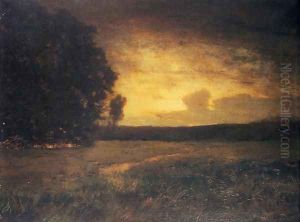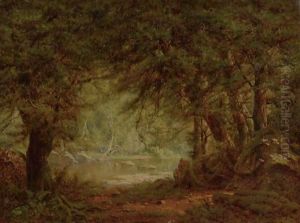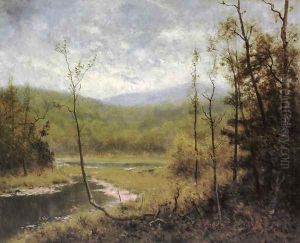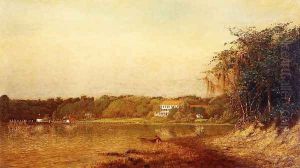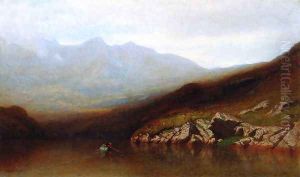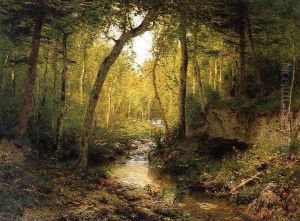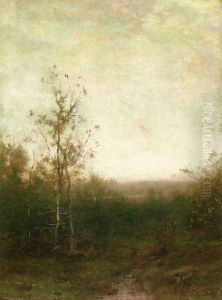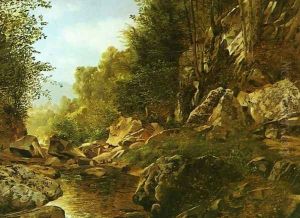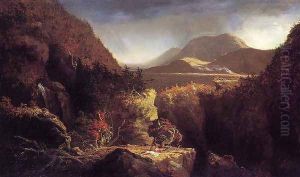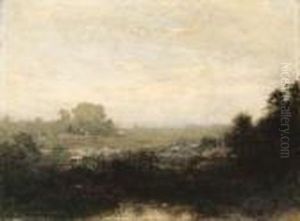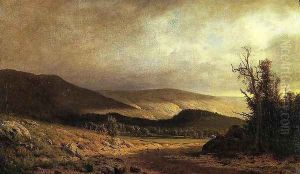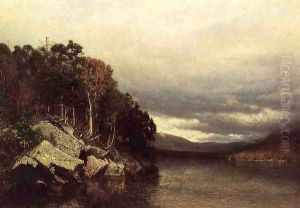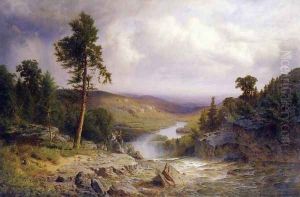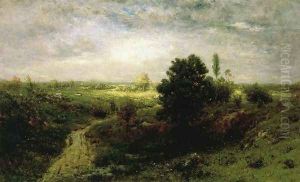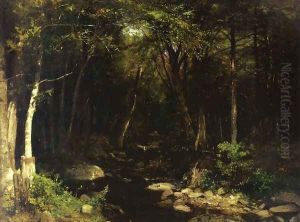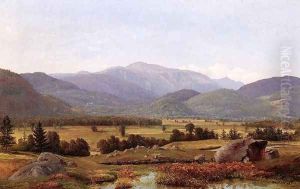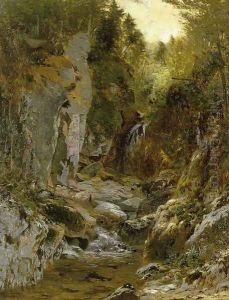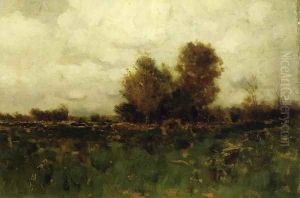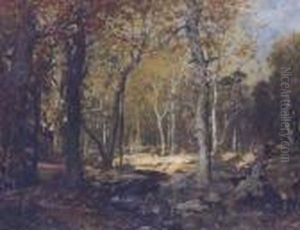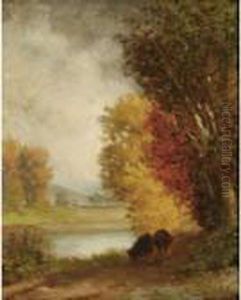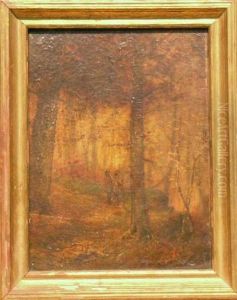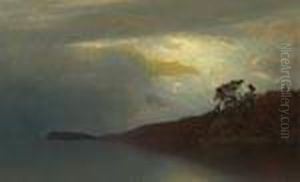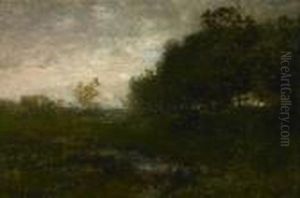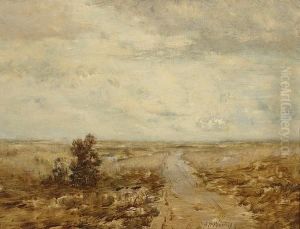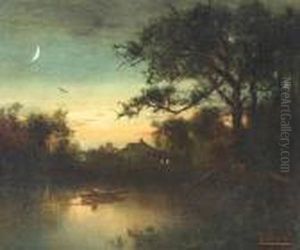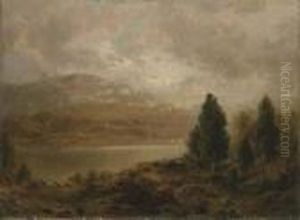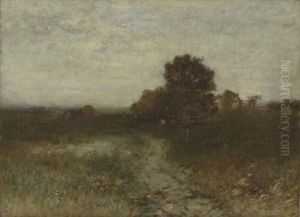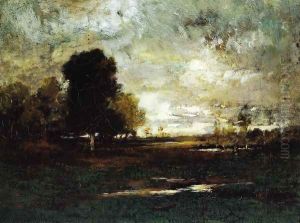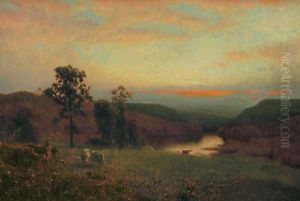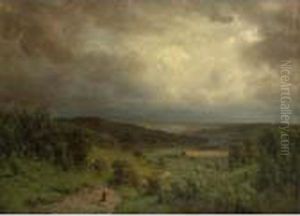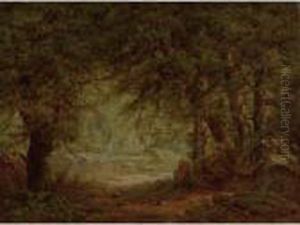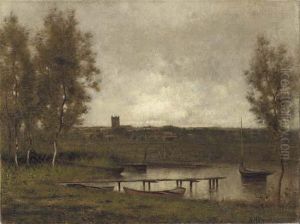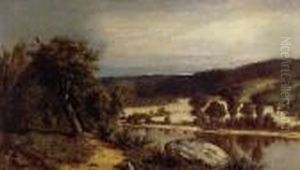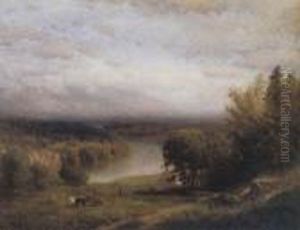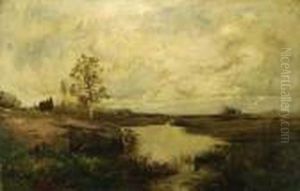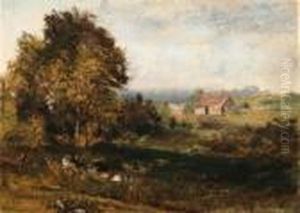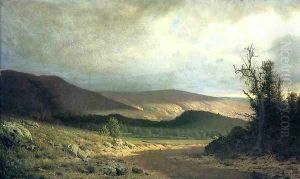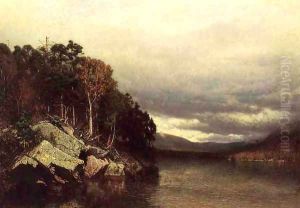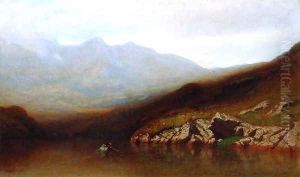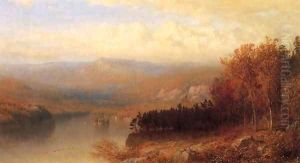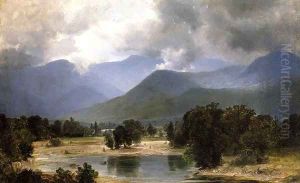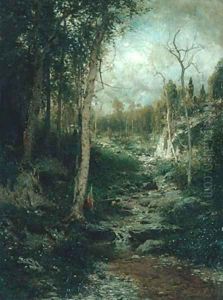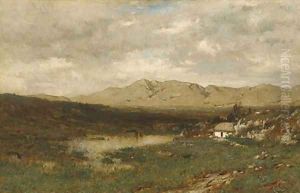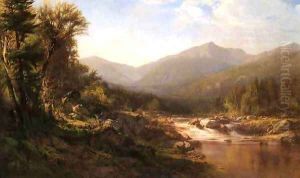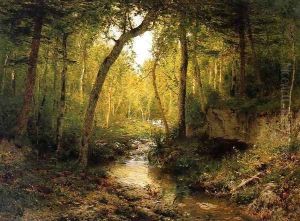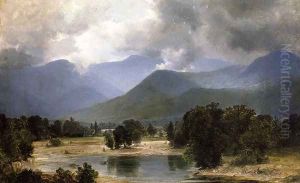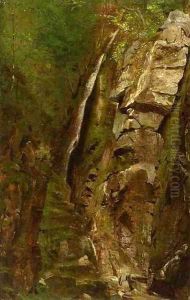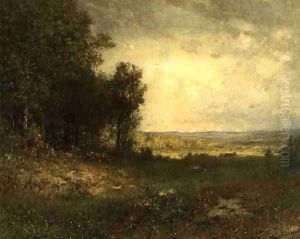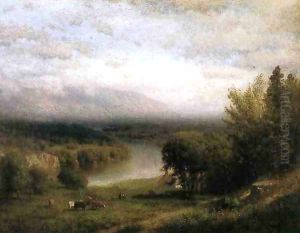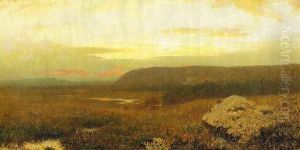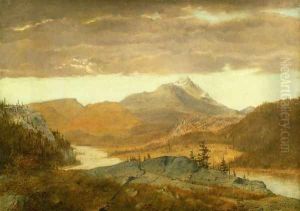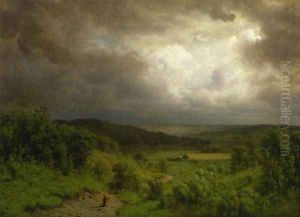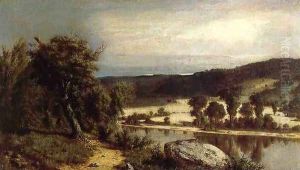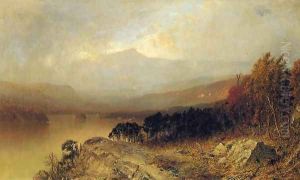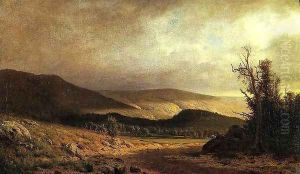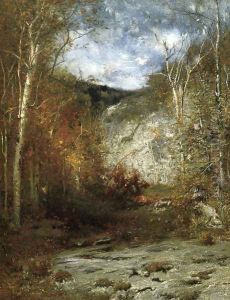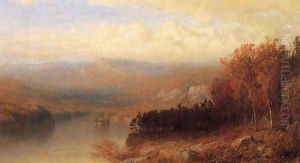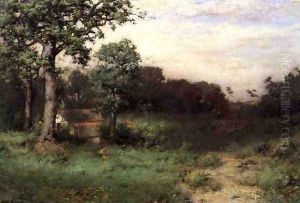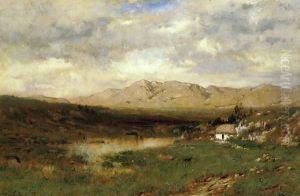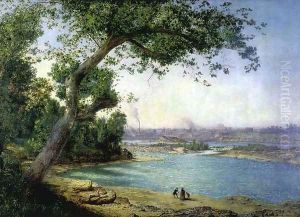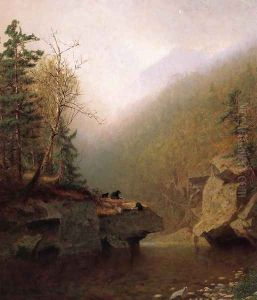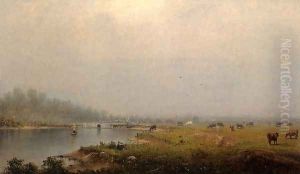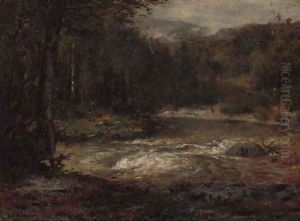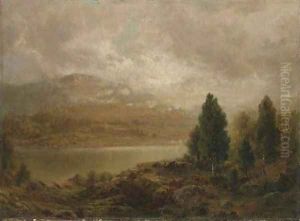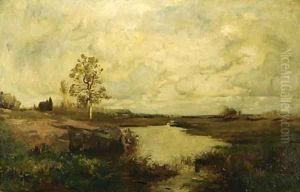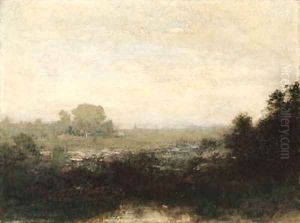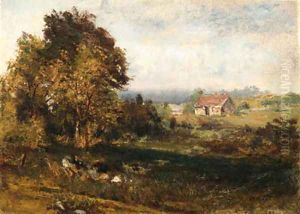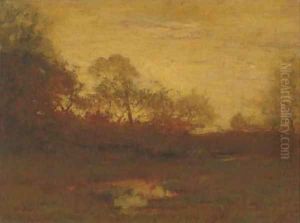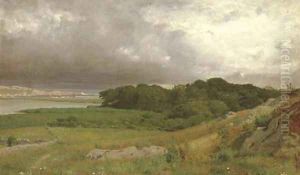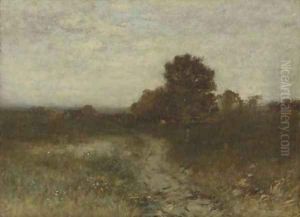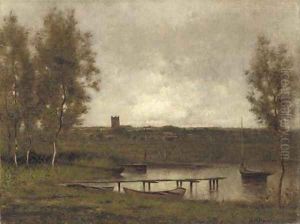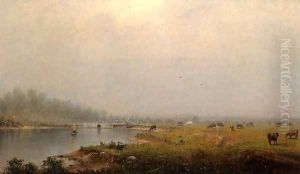Alexander Helwig Wyant Paintings
Alexander Helwig Wyant was an influential American landscape painter belonging to the second generation of the Hudson River School. Born in Port Washington, Ohio, on January 11, 1836, Wyant early on developed a passion for art, though his initial career path led him into a job at a saddlery. His interest in painting was kindled after seeing an itinerant painter's work, which inspired him to pursue art as a career.
Wyant saved enough money to study painting and in 1856, he went to Cincinnati to learn from portraitist James Henry Beard. In 1863, he furthered his studies by enrolling in the National Academy of Design in New York City. His talent was recognized, and he was elected an associate of the Academy in 1868, and a full Academician in 1869.
A pivotal moment in Wyant's career was his exposure to the work of George Inness, which deeply influenced his style. Wyant's early work was detailed and closely aligned with the Hudson River School's emphasis on depicting the grandeur of the American landscape. However, after his trip to Europe in 1865, where he encountered the Barbizon school of France, his style began to transition toward a softer, more atmospheric approach. This shift was solidified after a second trip to Europe in 1869-70, where he spent time in the art colony of Karlsruhe, Germany.
Upon returning to the United States, Wyant's health began to deteriorate after he suffered a stroke that left him partially paralyzed. Despite his physical limitations, he continued to paint, adapting his technique to his condition. Wyant's later works are characterized by a more expressive, almost impressionistic style with a subdued palette and a focus on the mood and atmosphere of the scene, rather than intricate detail.
Throughout the 1870s and 1880s, Wyant's reputation grew, and his works were in high demand. He became a central figure in the art world of his time, and his paintings were shown at major exhibitions, including those of the National Academy of Design, the Boston Art Club, and the Pennsylvania Academy of the Fine Arts.
Alexander Helwig Wyant's contribution to American art is significant. He bridged the gap between the Hudson River School and the Tonalist movement, influencing a generation of artists with his moody, evocative landscapes. Wyant passed away on November 29, 1892, in New York City. Despite his relatively short career, his work continues to be celebrated for its emotional depth and its subtle, lyrical approach to the natural world.
